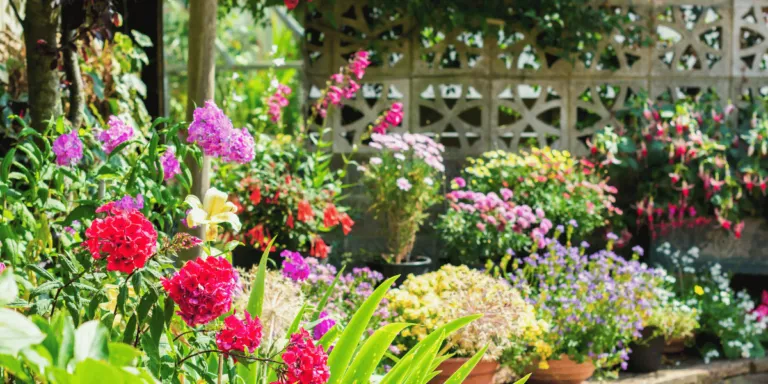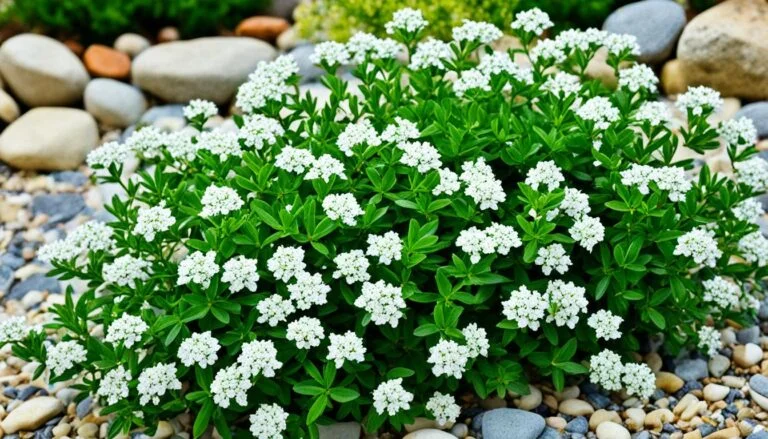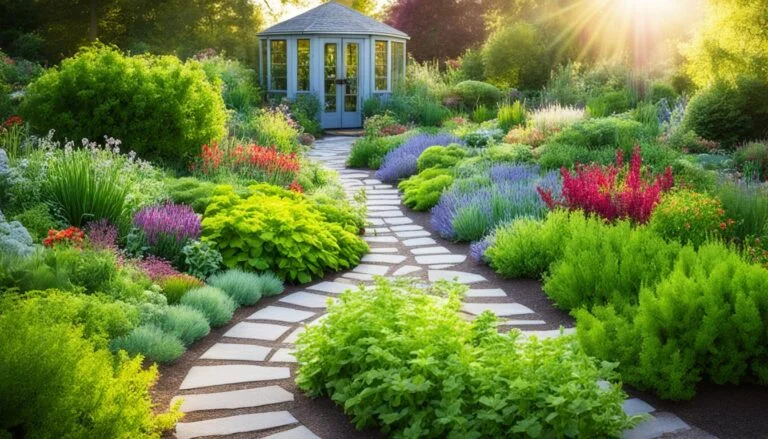How Often Should I Water Flowers Watering your flowers right helps them stay healthy and bright. Most flowers should get one inch of water every seven to ten days when they’re growing. This is equal to about five gallons for every square yard of soil. You can adjust this for less water in the off season.
You can check how much water your flowers get with things like canisters placed during sprinkling. Mulch keeps the soil moist, and using drip irrigation lowers the chance of diseases from wet soil.
It’s best to water outdoor flowers in the morning. The cool weather means more water goes to the roots and doesn’t just evaporate. This early watering also stops diseases by keeping the leaves dry.
Learning about these points makes a complete flower care watering guide.
Key Takeaways
- Water most flowers with one inch of water every seven to ten days during the growing season.
- One inch of water is approximately five gallons per square yard of soil.
- Native flowers require less watering once established.
- Watering in the morning reduces evaporation and disease risk.
- Mulch helps retain soil moisture and reduce evaporation.
- Drip irrigation systems can prevent disease spread from splashing water.
For more detailed tips on watering plants, visit this guide.
Understanding the General Watering Needs of Flowers
Taking care of your garden’s watering schedule is vital for its health and beauty. Flowers need about an inch of water every week. This is roughly five gallons per square yard. But, remember, the amount varies and depends on the weather and season.
The One-Inch Rule
The one-inch rule ensures your flowers get enough water. It means watering about an inch every seven to ten days in the growing season. But, you might need to adjust this based on your garden’s conditions. For example, different types of soil may need more or less water.
Adjusting for Climate and Seasons
Every climate affects the watering needs of flowers. In hot, dry weather, your flowers might need more water to stay healthy. When it’s raining a lot, you can water less. Plants that are native to the area usually need less water once they’ve grown. Using mulch can also keep the soil moist longer, meaning you water less often.
When to Water More or Less
Knowing when to water is key to keeping your flowers in good shape. Early mornings or late evenings are the best times to do it. This prevents water from evaporating too quickly and helps the roots get the water they need. Make sure you water deeply but not too much. This prevents problems like roots not getting enough air. Also, watch your plants closely. If you see their leaves turning yellow or they’re not flowering, they might need more water.
How Soil Type Affects Watering Frequency
It’s important to know about soil types to water your flowers right. Each type of soil keeps water differently. This affects how often you should water your plants. For example, sandy soil drains fast and needs more water. But, clay soil keeps water longer, so you water less often but more water each time.
| Soil Type | Watering Frequency | Key Characteristics |
|---|---|---|
| Sandy Soil | Frequent, light watering | Quick drainage, frequent mulching to retain moisture |
| Clay Soil | Less frequent, deep watering | Slow drainage, check moisture levels to avoid waterlogging |
| Loamy Soil | Consistent, moderate watering | Balanced water retention, ideal for a wide variety of plants |
| Silty Soil | Moderate watering | Retains moisture well, can become compacted |
When you water, think about these things for different soils:
- Sandy Soil: It needs lots of light waterings to keep moisture deep in. Mulching helps keep water from evaporating too fast.
- Clay Soil: Give it water slowly so it doesn’t get too wet. Check if it needs more water to avoid waterlogging and root rot.
- Loamy Soil: It likes to be evenly watered, which keeps things just right for many plants.
- Silty Soil: It keeps water well, but take care not to water too much so it doesn’t get too firm.
Knowing your soil helps your flowers stay hydrated just right. This keeps them strong and colorful all season long.
Best Practices for Watering Flowers in Containers
Watering plants in containers is vital, especially when it’s hot. Plastic planters are great for temporary use but have specific care needs. This helps avoid watering too much or too little.
Daily Checks in Hot Weather
Warmer temperatures mean plants in containers dry out faster. You should check them every day. Small plastic and patio containers might need water twice daily if it’s really hot. Bigger pots can hold more water and need less frequent watering.
Signs That Flower Pots Need Water
You can tell when a plant needs water by looking at it. Lighter soil, soil moving away from the edge, or dry soil on top is a sign. The plant might also look wilted or not as lively. This is when you should water them.
Watering Techniques for Flower Containers
It’s important to water container plants correctly. Slow watering lets the plant soak up moisture better. Always water until it drips out of the bottom. But, don’t let the plants sit in this extra water. Checking how dry the soil is or redoing the process might be needed.
Some false ideas include thinking that rainwater is enough. And plants pull water from the bottom, not the top. Over-watering by doing a little each day harms the plants. Deep watering helps the roots grow better.
Keeping soil too wet can drown the roots. Make sure containers have holes for water to escape. Using a drip system can make watering easier, especially for outdoor plants.
| Condition | Recommendation |
|---|---|
| Hot Weather | Check daily, possibly water twice a day |
| Dry Soil | Water until drainage occurs, avoid pot sitting in water |
| Over-Watering | Ensure proper pot drainage, avoid constant wet soil |
These tips will help your container plants thrive with bright, healthy flowers. For more in-depth advice, check out sites like SummerWinds Nursery or gardening blogs.
How Often Should I Water Flowers Tips for Watering Flowers in the Ground
To keep your flowers healthy, knowing how to water them right is key. There are special ways to water that help the plants stay strong and full of color.
The Finger Test for Soil Moisture
Testing the soil with your finger is easy and works well. Just stick your finger into the ground. If it’s dry a bit down, it’s time to water. This method helps make sure your plants get the water they need to thrive.
Using Mulch to Retain Moisture
Mulch stands as a top tip for good plant care. It keeps the soil moist by blocking water loss from the sun and wind. Also, it keeps the ground cool. This is important when the weather is hot and dry. With mulch, you can water your plants less often, which saves water.
Drip Irrigation and Sprinkler Systems
Drip irrigation is a great way to water flower beds. It sends water straight to the roots, cutting down water loss. This lowers the chance of plant diseases too. With drip systems and sensors, your plants only get as much water as they need. This prevents them from getting too much water, which can harm them.
| Watering Technique | Benefits |
|---|---|
| Finger Test | Provides accurate soil moisture assessment |
| Mulch | Reduces evaporation and retains soil moisture |
| Drip Irrigation | Efficient watering and disease prevention |
When Is the Best Time of Day to Water Flowers?
Deciding when to water your flowers is key to their well-being. The morning, before 10 a.m., is the perfect time. Plants absorb water best in the cooler mornings. Plus, it stays on their leaves, preventing disease.
Watering in the evening is okay but with a warning. If water sits on leaves all night, it can make plants sick. So, if mornings are busy, try the late afternoon for watering.
Don’t water at midday. The heat makes water evaporate fast. This means less water for plants, which can stress and damage them.
Knowing when to water matters for how your plants grow. Young flowers and new plants need more water. This helps them build strong roots. Older plants are fine with less water but they need a lot at once. It helps their roots grow deep.
So, try to water in the mornings. It’s good for the plants and helps prevent diseases. Evenings can work if mornings don’t. But, always make sure to keep plant leaves dry if you water later. Avoid watering at noon. It’s not good for your plants’ health.
Adjusting Your Watering Schedule for Different Flower Types
Changing your watering routine for various flower types is key for a bright, healthy garden. Drought-tolerant flowers and water lovers require different care. This means you should water them differently to keep them happy and alive.
Drought-Tolerant Flowers
Think of lavender, yarrow, and succulents – they need little water to bloom. They should be watered less, about once a week. This way, their roots get stronger and they can survive dry times better.
These plants love soil with lots of clay. Clay helps hold water without drowning the roots. It also allows the roots to get oxygen, which is really important.
Water-Loving Flowers
On the other hand, flowers like hydrangeas, impatiens, and ferns love water. They need to be watered more frequently, usually one to two times a week. This keeps the soil moist like they prefer. It’s crucial for their growth and health.
Using tools like wall-mounted hose boxes and hose trolleys makes watering these flowers easier. Watering in the morning or evening is best. Choose these times to keep the water from evaporating too quickly. It also prevents damage to the leaves from the sun.
How Weather and Climate Influence Watering Frequency
Knowing how climate affects watering is key to keeping flowers healthy. Your watering schedule must change with the weather to keep your plants well-hydrated.
Places that often get rain need less extra watering, which is good news for gardeners. However, areas that are hot and dry need more water. In these spots, water evaporates quickly, making it crucial to hydrate plants more.
Watering plants in the morning lets water soak into the ground before it’s too hot. This practice also helps plants grow strong roots.
Each type of plant responds differently to weather conditions. Trees do best with a deep, thorough soak, while it’s easy to overwater shrubs. Perennials like their soil moist but not soaked, while annuals, with their shallow roots, need regular watering.
Adding a layer of organic mulch to soil keeps it moist and cuts down on water loss. This step is beneficial in both rainy and dry areas.
The type of soil in a garden also plays a big role in how you should water. Sandy soil needs more water because it drains quickly. Clay soil holds onto water longer, sometimes too long. This difference means you must watch carefully to avoid watering too much or too little.
| Plant Type | Watering Needs |
|---|---|
| Trees | Deep watering sessions |
| Shrubs | Attention not to overwater |
| Perennials | Moist but not soggy soil |
| Annuals | Frequent watering due to shallow roots |
Vegetables have specific water needs too. They generally need about an inch of water per week. But this can change with the temperature.
For each 10°F warmer it gets, vegetables need another half-inch of water.
Mulching and using drip irrigation helps save water. This is good for the environment and can help your plants grow well. By paying attention to your watering needs, you can see your garden flourish in any climate.
How Often Should I Water Flowers
Finding out how often to water flowers is key for their well-being. You should ideally water plants in the morning. This gives them time to soak up moisture before the sun is strong. Watering in the evening is okay, but you must be careful not to cause rot or fungus.
Plants in containers usually need more water, especially as they get bigger. Since pots and baskets have limited space for roots, they dry out faster. This means you need to water them more.
The type of soil matters a lot for watering flowers. Sandy soil drains fast and needs more water. Clay soil, on the other hand, holds water well. So, you shouldn’t water clay soil too much.
When plants are new, you should water them every day until their roots grow well, around two weeks. After that, you should aim to give them about 1 inch of water every week. This includes rainwater. For every square yard of soil, five gallons should be enough.
It’s smart to group plants that like the same amount of water together. Watch out for signs of too little or too much water. These signs could be brown leaves, drooping stems, or slow growth. Adjust your watering based on these signs.
Flowers in pots may need checking every day, maybe even twice, in hot weather. Check the soil by feeling it or checking its color. Dry soil is light, while wet soil is dark. Make sure to water deeply, so water goes out the bottom. A big 10 to 12-inch pot might need a whole gallon of water.
To keep watering flowers in the ground right, aim for 1 inch of water a week, during the growing season. How much water different plants need can vary. Using mulch and drip systems can keep soil moist and reduce how often you need to water.
It’s best to water deeply once, instead of a little water often. This helps plants grow deep roots. Adding compost to sandy soil can make it hold more water. Mulch also helps soil keep moisture. This again makes for better plant growth.
Watering Tips for Healthy Plants and Vibrant Blooms
Keeping a good watering schedule for flowers is key for their health and vivid blooms. It’s important to know the signs of too much or too little water. Also, remember to change your watering habits based on the season.
Signs of Overwatering
Overwatering is a major problem, causing issues like browning leaves and root rot. Too much water stops plants from getting the air they need. If your plants show these signs, try letting the soil dry out more between waterings.
Detecting Underwatering
Underwatering can be just as bad, seen in wilted or crispy leaves. Small pots or hanging plants might need water more often, even twice a day when it’s hot. Bigger plants usually need water daily, even in summer, but less water each time.
Adapting to Seasonal Changes
Plants ask for less water in winter because days are shorter and they rest more. But as late spring and summer come, with higher heat, plants need more water. This might be a few times a week or even daily in summer. Spring’s cooler weather could mean watering once a week only.
By following these steps, you’ll keep a steady and effective watering schedule for flowers. This leads to vibrant blooms through proper watering all year round. Knowing how to water well keeps your plants healthy, which is very rewarding.
Creating a Watering Routine for Your Garden
A good watering routine keeps your garden healthy and green. To make sure every plant gets what it needs, group them based on how much water they like. This method helps you water efficiently, saving time and keeping your plants happy.
Grouping Plants by Watering Needs
To water your plants right, start by putting them in groups. Plants with the same water needs go together. This makes watering easier and less confusing. For instance, plants that need a lot of water should be paired. So should those used to less water, to avoid giving them too much.
Setting Up a Schedule Based on Your Garden’s Specifics
Setting a schedule means knowing your garden well. Think about what kinds of plants you have, the soil, and the weather. Gardens usually need about 1 inch of water a week, which can be from rain or added water. Water young plants daily at first, until they grow strong roots, which takes about two weeks. It’s best to water in the morning to use less water and keep plants healthy.
Look at the table to help plan when to water different types of plants. This way, each plant gets the right amount of water without wasting any.
| Plant Type | Watering Frequency | Recommended Time | Notes |
|---|---|---|---|
| Established Garden Plants | 1 inch per week | Morning | Use rainfall and supplemental watering |
| Young Seedlings | Daily | Morning | Essential until roots are established |
| Container Plants | More frequent | Morning/Evening | Avoid midday watering to prevent evaporation |
| Drought-Tolerant Plants | Less frequent | Morning | Ensure soil dries out between watering |
Keep an eye on your garden and tweak your watering plan as needed. This will help keep your plants strong and beautiful all year.
Conclusion
How Often Should I Water Flowers Making sure your flowers get just the right amount of water is key to a beautiful garden. Too much water can cause troubles like root rot and mold. Every plant type needs different amounts of water. For ground plants, a general rule is to give them an inch of water each week. But, you should change this based on what the plant likes and the weather.
The water quality affects your plants too. Most gardeners use a mix of tap and rainwater. You can check the water’s quality with tests from your city. The right soil pH is very important for plants to grow well. Rainwater can help by adding important salts and nutrients.
To prevent plant problems from too much water, you might want to use soaker hoses. It’s also smart to know just how much water your plants need. Consider the weather and what your soil is like. Adding mulch can keep the soil wet for as long as possible. This is great in places that don’t get much rain each year. Following these tips will help your garden’s flowers look their best.













